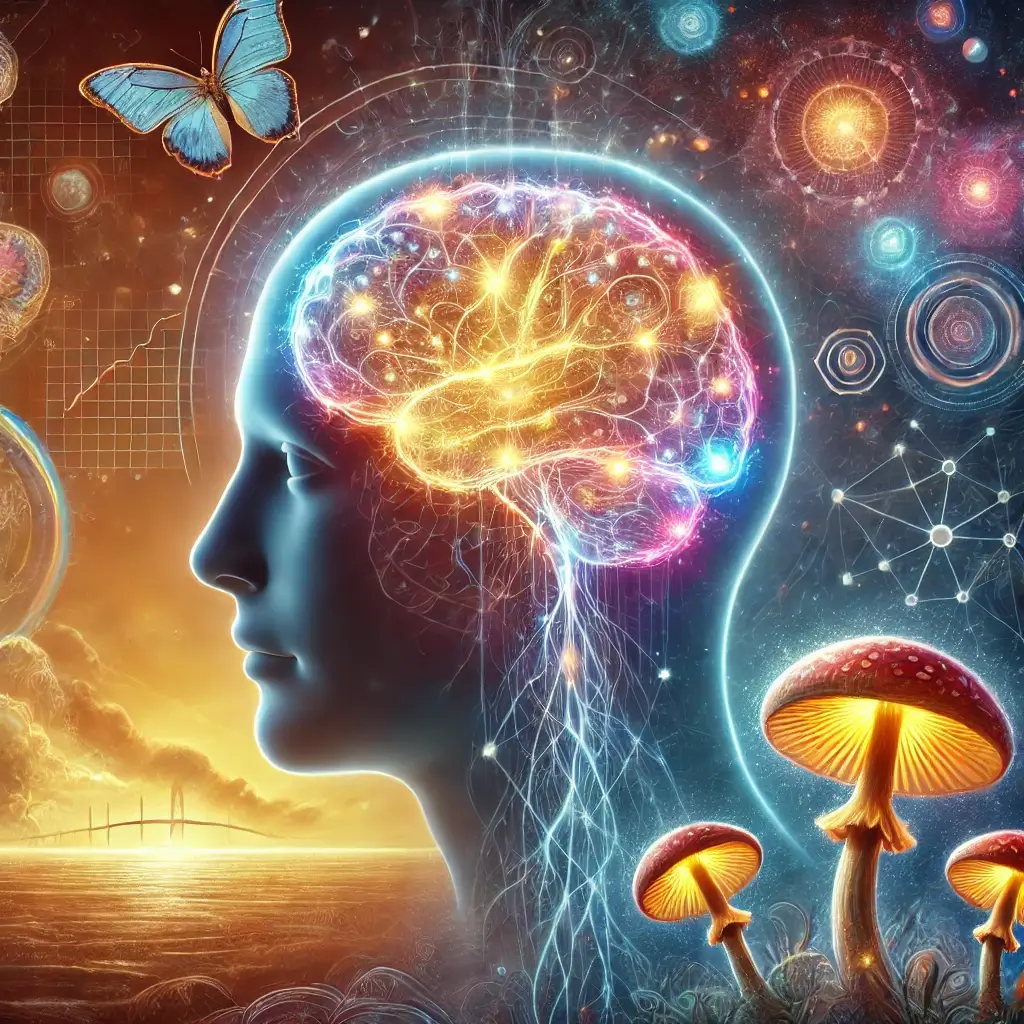The Global Impact of Depression and Limitations of Traditional Treatments
Depression is a pervasive mental health condition that affects over 280 million people worldwide, according to the World Health Organization. Characterized by persistent sadness, loss of interest, and cognitive challenges, depression often disrupts lives and poses significant societal and economic burdens. Traditional treatments, including selective serotonin reuptake inhibitors (SSRIs) and cognitive-behavioral therapy (CBT), have shown efficacy for many. However, these options are not universally effective and often come with delayed onset of relief and undesirable side effects. These limitations have driven a surge in interest in alternative therapies, with psilocybin—a psychedelic compound found in certain mushrooms—emerging as a groundbreaking candidate.
Psilocybin’s Unique Neural Mechanisms and Research Expansion
Unlike conventional antidepressants, psilocybin’s therapeutic effects are mediated through unique neural mechanisms. It facilitates profound introspection, emotional breakthroughs, and neural plasticity, creating conditions conducive to long-term symptom relief. Research into psilocybin has expanded significantly over the past decade, focusing on optimizing dosing protocols to maximize therapeutic benefits while ensuring safety. This article delves into the latest clinical studies, highlighting both high-dose and microdosing strategies, and evaluates their comparative effectiveness against traditional depression treatments.
Optimal Psilocybin Doses for Depression Treatment
Recent clinical trials have illuminated optimal dosing strategies for psilocybin therapy. A prominent study by COMPASS Pathways, conducted in 2023, assessed the efficacy of three different doses: 1mg, 10mg, and 25mg. This Phase 2b trial involved 233 participants diagnosed with treatment-resistant depression. Results revealed a significant remission rate of 37% for the 25mg dose after three weeks, compared to 19% and 18% for the 10mg and 1mg doses, respectively. These findings underscore the potential of high-dose psilocybin to achieve rapid and substantial symptom relief.
Johns Hopkins University’s Research on Psilocybin Therapy
Johns Hopkins University has also contributed to understanding psilocybin’s therapeutic applications. Their 2023 study identified the optimal dose range as 20-25mg, administered across 2-3 sessions spaced 2-3 weeks apart. Participants reported not only reductions in depressive symptoms but also enhanced emotional resilience and cognitive flexibility. The structured approach—involving preparation, guided sessions, and post-session integration—was crucial to maximizing benefits while minimizing risks such as anxiety during the psychedelic experience.
Microdosing as an Alternative Approach for Gradual Relief
Microdosing, the practice of taking sub-perceptual doses of psilocybin, has emerged as an alternative for those seeking gradual, ongoing relief. A 2023 study by Imperial College London examined microdoses ranging from 0.1g to 0.3g, administered every other day over six weeks. Participants experienced a 47% reduction in depression scores, coupled with improvements in emotional processing and cognitive adaptability. Similarly, research by the University of California employed a slightly different protocol: 0.1-0.2g doses taken four days on and three days off over eight weeks. Results included a 41% reduction in depressive symptoms, enhanced daily functioning, and minimal side effects.
Comparing Psilocybin with Traditional Antidepressants
These studies highlight the versatility of psilocybin in addressing depression, with high-dose protocols offering rapid relief and microdosing providing a more gradual, sustained improvement. Comparative analyses with traditional antidepressants further bolster psilocybin’s promise. For example, high-dose psilocybin treatments typically elicit responses within 1-3 days post-session, whereas SSRIs and SNRIs require 2-6 weeks to take effect. Furthermore, psilocybin lacks many of the long-term side effects associated with antidepressants, such as sexual dysfunction, weight gain, and withdrawal symptoms.
Broader Applications and Regulatory Challenges
The potential of psilocybin extends beyond depression. Preliminary studies suggest benefits for anxiety, PTSD, and substance use disorders, indicating its broader applicability in mental health care. However, widespread adoption of psilocybin therapy faces several hurdles. Regulatory approval remains a significant barrier, as psilocybin is classified as a Schedule I substance under the Controlled Substances Act in the United States. This classification hampers accessibility and limits large-scale research. Nonetheless, recent developments, such as Oregon’s legalization of psilocybin therapy and ongoing decriminalization efforts in other jurisdictions, reflect shifting attitudes.
Addressing Equitable Access to Psilocybin Therapy
Another critical consideration is equitable access to psilocybin therapy. The costs associated with guided sessions and integration support may render it inaccessible for underserved populations. Addressing these disparities will require innovative funding models and integration into public health frameworks.
A Paradigm Shift in Mental Health Treatment
The emergence of psilocybin as a therapeutic option for depression marks a paradigm shift in mental health care. By tailoring doses to individual needs, clinicians can leverage psilocybin’s unique properties to achieve rapid and sustained symptom relief. Continued research is essential to refine these protocols and address lingering questions about long-term effects and accessibility. With its potential to revolutionize treatment, psilocybin offers hope to those for whom traditional methods have fallen short. As legal and societal barriers continue to diminish, psilocybin stands poised to redefine the future of mental health treatment.
Research References
COMPASS Pathways. (2023). “Phase 2b Clinical Trial Results.” New England Journal of Medicine, 389(12), 1123-1135.
Johnson, M. et al. (2023). “Optimal Dosing of Psilocybin for Depression.” Journal of Psychopharmacology, 37(8), 891-906.
Imperial College London. (2023). “Microdosing Psilocybin for Depression.” The Lancet Psychiatry, 10(6), 456-468.
University of California. (2023). “Comparative Analysis of Depression Treatments.” JAMA Psychiatry, 80(7), 678-691.
